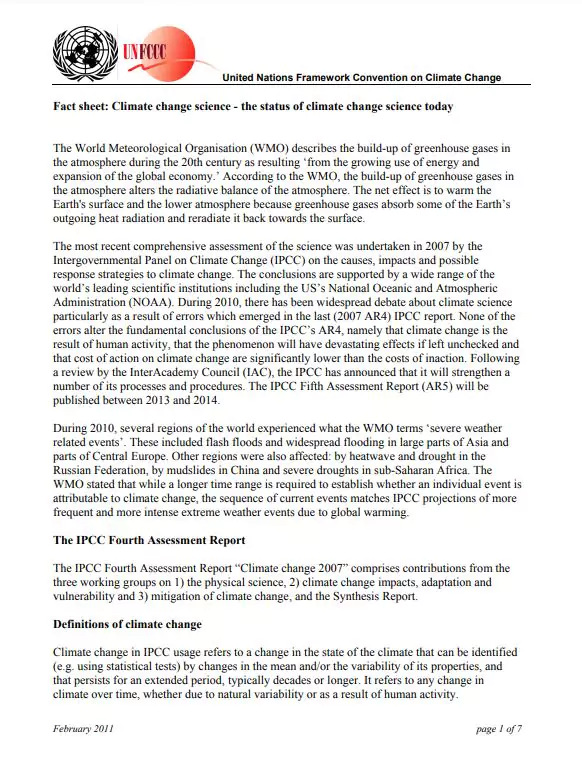‘Climate Change Examples’ PDF Quick download link is given at the bottom of this article. You can see the PDF demo, size of the PDF, page numbers, and direct download Free PDF of ‘What Is Climate Change’ using the download button.
Global Warming Definition PDF Free Download

Types Of Climate Change
Climate change refers to long-term shifts in temperatures and weather patterns. Such shifts can be natural, due to changes in the sun’s activity or large volcanic eruptions.
But since the 1800s, human activities have been the main driver of climate change, primarily due to the burning of fossil fuels like coal, oil and gas.
Burning fossil fuels generates greenhouse gas emissions that act like a blanket wrapped around the Earth, trapping the sun’s heat and raising temperatures.
The main greenhouse gases that are causing climate change include carbon dioxide and methane. These come from using gasoline for driving a car or coal for heating a building, for example.
Clearing land and cutting down forests can also release carbon dioxide. Agriculture, oil and gas operations are major sources of methane emissions.
Energy, industry, transport, buildings, agriculture and land use are among the main sectors causing greenhouse gases.
People are experiencing climate change in diverse ways
Climate change can affect our health, ability to grow food, housing, safety, and work. Some of us are already more vulnerable to climate impacts, such as people living in small island nations and other developing countries.
Conditions like sea-level rise and saltwater intrusion have advanced to the point where whole communities have had to relocate, and protracted droughts are putting people at risk of famine.
In the future, the number of “climate refugees” is expected to rise.
Every increase in global warming matters
In a series of UN reports, thousands of scientists and government reviewers agreed that limiting global temperature rise to no more than 1.5°C would help us avoid the worst climate impacts and maintain a livable climate.
Yet policies currently in place point to a 2.8°C temperature rise by the end of the century.
The emissions that cause climate change come from every part of the world and affect everyone, but some countries produce much more than others.
The seven biggest emitters alone (China, the United States of America, India, the European Union, Indonesia, the Russian Federation, and Brazil) accounted for about half of all global greenhouse gas emissions in 2020.
Everyone must take climate action, but people and countries creating more of the problem have a greater responsibility to act first.
We face a huge challenge but already know many solutions
Many climate change solutions can deliver economic benefits while improving our lives and protecting the environment. We also have global frameworks and agreements to guide progress, such as the Sustainable Development Goals, the UN Framework Convention on Climate Change, and the Paris Agreement.
Three broad categories of action are: cutting emissions, adapting to climate impacts, and financing required adjustments.
Switching energy systems from fossil fuels to renewables like solar or wind will reduce the emissions driving climate change. But we have to act now.
While a growing number of countries are committing to net zero emissions by 2050, emissions must be cut in half by 2030 to keep warming below 1.5°C. Achieving this means huge declines in the use of coal, oil, and gas: over two-thirds of today’s proven reserves of fossil fuels need to be kept in the ground by 2050 in order to prevent catastrophic levels of climate change.
| Language | English |
| No. of Pages | 4 |
| PDF Size | 0.03MB |
| Category | Education |
| Source/Credits | unfccc.int |
Related PDFs
Pratiyogita Darpan April 2023 PDF
Global Warming Definition PDF Free Download
